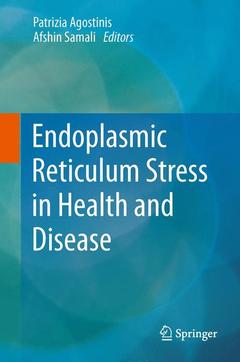Description
Endoplasmic Reticulum Stress in Health and Disease, 2012
Coordinators: Agostinis Patrizia, Afshin Samali
Language: English
Subjects for Endoplasmic Reticulum Stress in Health and Disease:
Keywords
Cell Death; Diseases; ER stress; Inflammation; Unfolded Protein response; Apoptosis
Publication date: 09-2014
452 p. · 15.5x23.5 cm · Paperback
Publication date: 08-2012
452 p. · 15.5x23.5 cm · Paperback
Description
/li>Contents
/li>Comment
/li>
Preface. Part I: Cellular responses to ER stress.-1 Biology of the endoplasmic reticulum.-2 A tight-knit group: protein glycosylation, endoplasmic reticulum stress and the unfolded protein response.-3 ER stress signaling pathways in cell survival and death.-4. Eendoplasmic reticulum-mitochondria connections, calcium cross-talk and cell fate: a closer inspection.-5 ER stress and upr through dysregulated er ca2+ homeostasis and signaling.-6 Regulation of ER stress responses by micrornas.-7 ER stress as modulator of autophagy pathways.-8 physiological ER stress: the model of insulin-secreting pancreatic β-cells.Part II: ER stress in physiological & pathological conditions.-9 Pathological ER stress in b cells.-10 Endoplasmic reticulum stress and the unfolded protein response in lipid metabolism and obesity.-11 ER stress and inflammation.-12 ER stress in intestinal inflammatory disease.-13 Role of ER stress in dysfunction of the nervous system.-14 Endoplasmic reticulum (ER) stress in amyotrophic lateral sclerosis (als).-15 Cardiovascular disease and endoplasmic reticulum stress.-16 Signaling the unfolded protein response in cancer.-17 Upr activation in cancer cells: a double-edged sword.-18 Contribution of ER stress to immunogenic cancer cell death.-19 current advances in ER stress intervention therapies. Index
These books may interest you

Organelle and Molecular Targeting 244.87 €



